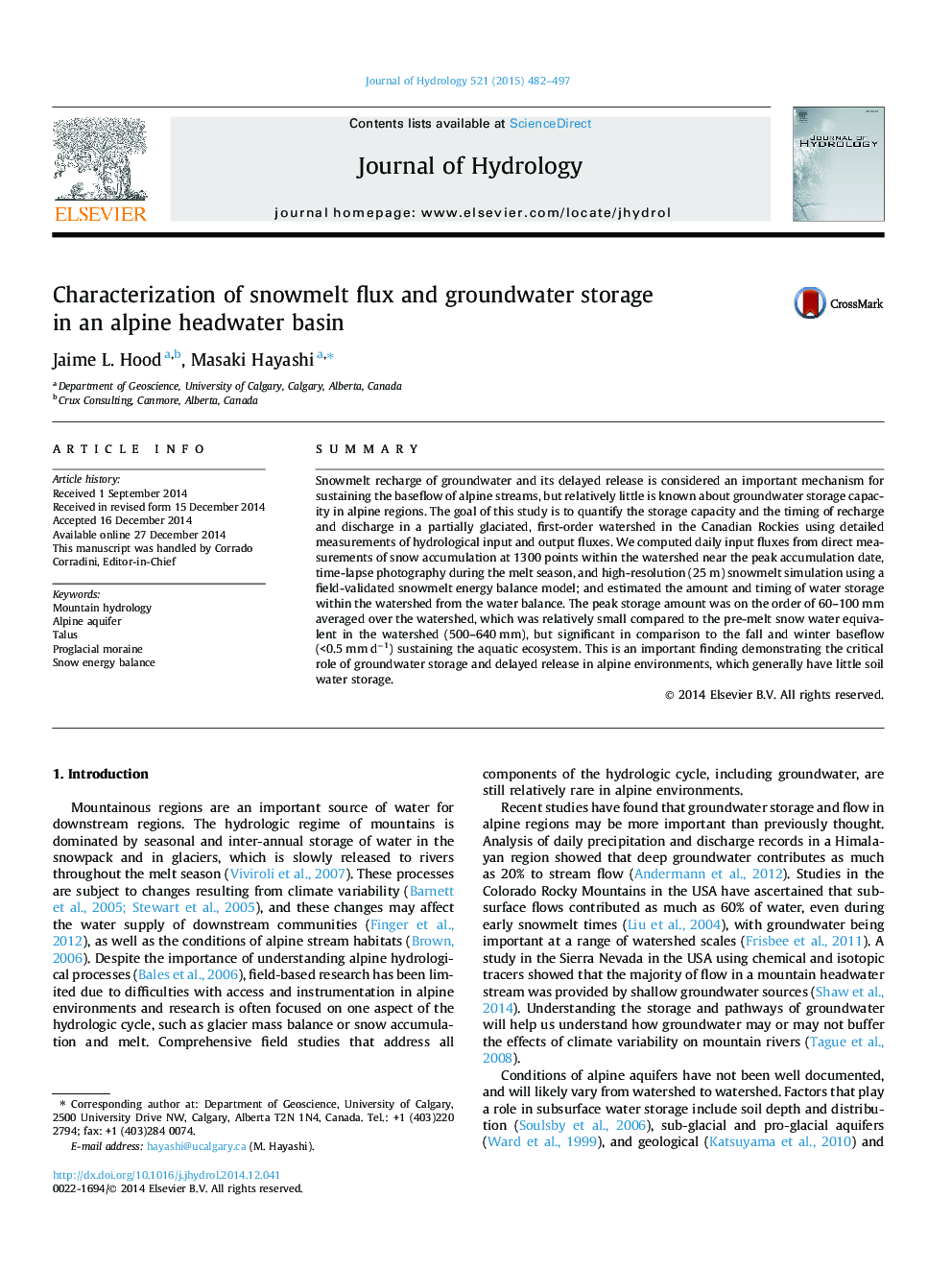| Article ID | Journal | Published Year | Pages | File Type |
|---|---|---|---|---|
| 6411612 | Journal of Hydrology | 2015 | 16 Pages |
â¢Groundwater storage in an alpine watershed is quantified using field measurements.â¢Groundwater storage is relatively small compared to snow storage.â¢Groundwater storage is substantial compared to baseflow rates.â¢Much of storage is in the coarse sediments of proglacial moraine.â¢Estimate of snowmelt flux is sensitive to the spatial distribution of radiation inputs.
SummarySnowmelt recharge of groundwater and its delayed release is considered an important mechanism for sustaining the baseflow of alpine streams, but relatively little is known about groundwater storage capacity in alpine regions. The goal of this study is to quantify the storage capacity and the timing of recharge and discharge in a partially glaciated, first-order watershed in the Canadian Rockies using detailed measurements of hydrological input and output fluxes. We computed daily input fluxes from direct measurements of snow accumulation at 1300 points within the watershed near the peak accumulation date, time-lapse photography during the melt season, and high-resolution (25 m) snowmelt simulation using a field-validated snowmelt energy balance model; and estimated the amount and timing of water storage within the watershed from the water balance. The peak storage amount was on the order of 60-100 mm averaged over the watershed, which was relatively small compared to the pre-melt snow water equivalent in the watershed (500-640 mm), but significant in comparison to the fall and winter baseflow (<0.5 mm dâ1) sustaining the aquatic ecosystem. This is an important finding demonstrating the critical role of groundwater storage and delayed release in alpine environments, which generally have little soil water storage.
